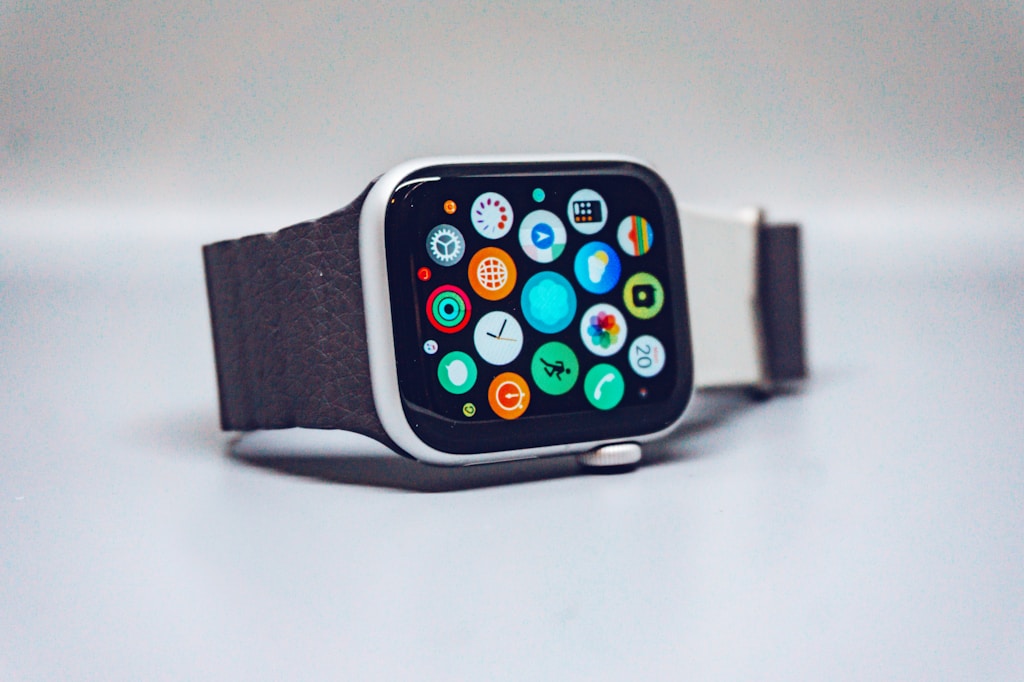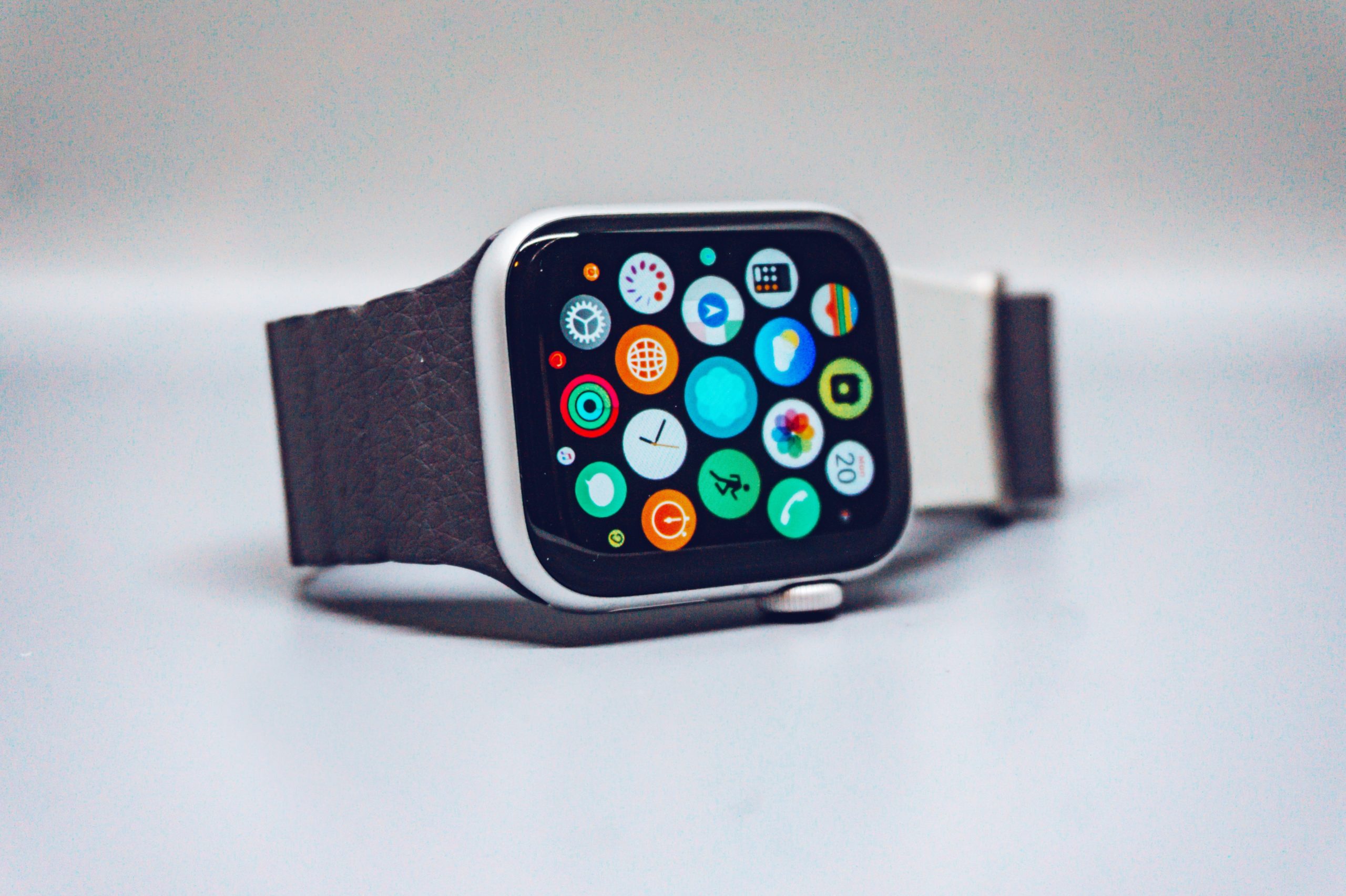In These Unusual Times®, I’m flat out grateful to Apple for giving us a product launch event focused on their three most stable — I’m tempted to say basic—product lines: Apple Watch, iPad, and “Services.”
The world outside may be dark and full of terrors, but you can go to bed secure in knowing that Apple Watches look and feel the same as they did last year, that Apple consider them primarily health devices, that there is still a 9–10″ iPad with a home button apparently aimed at children.

Apple’s new “perfect thing”
Have you ever stopped to marvel at how, in a world where analysts and internet people bitch about Apple never innovates anymore, and iPhones and Macs seem to change in small, annoying ways every couple of years, the Apple Watch’s design is completely unchanged from when it debuted in 2014?
I think this reflects two things. First, that Jony Ive and team did an epic job designing the original Watch, not only landing on a physical size and shape that would work well as a daily wearable for a heckuva lot of people, but also one that would support constant iteration on the sensors and electronics inside. Every Apple Watch release has been slightly different, but none of them have looked or felt different, because the Watch design still does everything it needs to.
That’s not to say the Watch design is perfect for everyone. My friend Christopher, who likes thinner, lighter watches, has said since the beginning that the Watch doesn’t appeal to him. And my wife, who hadn’t regularly worn watches or fitness trackers but got an Apple Watch Series 4 two Christmases ago, still doesn’t regularly wear hers as a watch or a fitness tracker. Apple could try to mess with the formula to appeal more broadly to people who don’t like the shape and weight, but then they’d have to trade off features, battery life, or having a simpler ecosystem for bands and chargers.
I don’t have much to say about the year-over-year feature updates in Series 6, other than to say they look good. I am still wearing a Series 4, so I don’t have the always-on display from last year’s model. This year’s always-on display is supposed to be brighter; sounds good to me. The pulse oximeter is interesting; I’m curious to see whether it makes fitness tracking more accurate.
Something I hadn’t quite noticed during the event, or when I first looked at the new watches on the website: this year Apple has replaced the ‘space black’ steel finish (which has been my watch metal of choice for a few years) with a new ‘graphite’ finish. John Gruber has a deeper dive into the new graphite metal than one would think anyone needs; the gist is that it sounds like (a) the new color is a nice compromise between the Darth Vader-ness of the old black and the high bling-ness of silver stainless, and (b) Apple’s evolution into a metallurgy company that happens to sell gadgets continues unabated.

Expand-a-band-band
While the Watch body design is almost unchanged, Apple continues to iterate on bands, and this year’s crop are the newest, most interesting ones since the first gen. Especially the new, clasp-less Solo and Solo Braided bands, which come in a dozen sizes, requiring you to measure your wrist to find the right size before ordering.
When you go to order a Solo band (or a Watch that comes with one), Apple suggests that you print and cut out a sizing guide to find the correct fit. (BTW, I’m a size 7 if anyone is looking to order me gifts.) This strikes me as a very un-Apple experience, not least because so many people don’t have printers anymore.
I have a theory that, because Apple’s product design timeline tends to be way over a year, their original plan was for most customers to come into Apple Stores and get fitted for a Solo band by a store employee, bringing a bit of interactivity and even more of a premium, ‘bespoke tailoring’ quality to the Watch buying experience. Obviously, Covid-19 made that impossible for most people. I’m sure Apple would have offered the printout or measurements anyway for online shoppers, but I can’t imagine a non-Covid timeline where they didn’t strongly encourage in-store fittings over having to print something.
One more thing…
This year Apple has further pared back the Apple Watch Edition lineup, which famously began with $10,000+ solid gold smartwatches, and today, with the retirement of the ceramic option, now consists of just two titanium models priced just $100 higher than the steel ones.
I know some people who bought the titanium Watch last year and like it; personally, I’m a longtime stainless steel/sapphire crystal stan, and what’s more I find it interesting that Apple offers a “luxury” titanium finish… yet the Hermès watches are all steel, as are several of Apple’s other high-end products (iPhone Pro, Mac Pro). It wouldn’t shock me if, once Apple has worked through the last Jony Ive-supervised designs, the Edition line goes away completely in the next year or two.
iPad Air and iPad 8
IMO, a lower-end iPad Pro—which is what the iPad Air is, if we’re being honest—was inevitable. Eventually, even the classic 10″ iPad design (which lives on as the low-end 8th generation model) will fall away, replaced by chamfered edges and a ‘Liquid Retina’ display.
For me the most interesting thing is that Touch ID is back, baby! I have trouble imagining that Apple would ship a device (like a future iPhone or iPad Pro) with both Touch ID and Face ID, but at the same time I really wish they would. I find the look-and-double-click gesture to confirm Apple Pay payments on modern iOS devices kind of hellish, and obviously Face ID is a much worse idea in a world where we all wear masks all the time. The possibility of Touch ID coming back to iPhone has me even more excited for the iPhone 12 launch event (currently assumed to be next month).
Hiding the Touch ID sensor inside the sleep/wake button is not a new idea—Google did the same thing on the short-lived Pixel Slate tablet—but it’s a good one, and gives Apple an excuse to talk about sapphire crystal and custom metallurgy, which they love to do.
I’ve been meaning to write something about the state of iPad, especially now that iPads support mouse pointers and Apple is selling a $300 accessory that turns iPad Pros (and now Airs) into overly heavy, but gorgeous and elegant, mini laptops. It’s hard to react too strongly to new iPad models because, well, iPads are iPads, and their place in most people’s lives remain awkward and unsettled. As much as I would love for my iPad to do more, it’s not quite ready for prime time for any of the ‘real’ computing work I do (and even if it were, the IT department at work doesn’t fully support it).
These two new, consumer-focused models are great hardware for the classic iPad use cases (“armchair computing”, kid use, gaming, videos). The new iPad Air colors look nice.
One more thing: a bundle
More like a bundle of cash for value-added services, amirite?!!??
Seriously, though, it’s hard to imagine a near future where One—Apple’s one-price bundle for all their monthly add-ons—is not being obnoxiously pushed as an upsell via modals and notification banners. In some respects, the user win for this product is that you can pay one price (which is the same price as Music and TV+) and shut up a whole host of upsells.
In my case, because I already pay Apple way too much money, One Premier ($30/mo) is likely to save me a fair bit of it. It’s the same combined price as Apple Music Family ($15), 2 TB of iCloud storage ($10), and TV+ ($5), all of which we pay for, which for me means getting Arcade ($5), News+ ($10), and Fitness+ (???) for free.
I can see this bundle being a nice simplifier for people who are overwhelmed by Apple’s growing panoply of services and fees. I joke about the in-product upsells we’re likely to see to buy or upgrade to One, but they’ve packaged and priced these bundles well, though Apple remains absurdly stingy about iCloud storage (seriously? 200 GB for a whole family when everyone’s phones shoot 4K video?).
A big open question: when Apple rolls out new services, will they be included in One, making it an even better value? Or will users have to go back to multiple subscriptions/charged or “upgrade” to new versions of the bundle? 🤔
